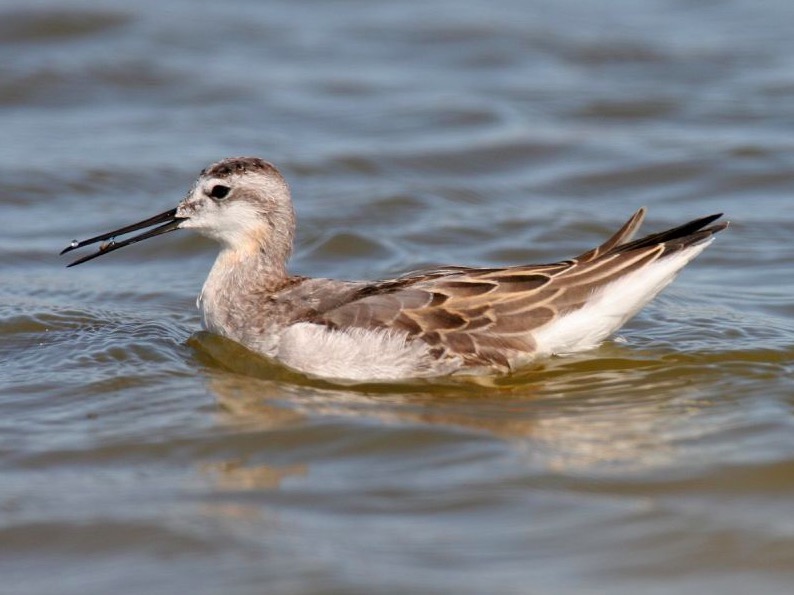
PHOTO CREDIT: Rainey Schuler
A certain class of shorebirds have an extremely clever feeding mechanism. By swimming in a circle, the phalarope generates a vortex that sweeps its prey towards the surface, like tea leaves in a stirred tea cup (see video below). Then, by dipping its beak into the water and withdrawing it, the bird captures its prey inside a droplet pinned between its upper and lower bills. By moving its beak in a tweezer -like succession of openings and closings, the phalarope transports the drop and the desired prey from its beak tip to its mouth. The ability to transport fluid in this fashion was demonstrated in a series of analogue experiments (see second video below).

PHOTO CREDIT: Rainey Shuler
We here present the results of a combined experimental and theoretical investigation of this subtle feeding mechanism. Our study provides a simple physical rationalization for the observation of multiple mandibular spreading cycles in feeding, and highlights the critical role of contact angle resistance. We also find a unique geometrical optima in beak opening and closing angles for the most efficient drop transport. This mechanism would seem to be a unique natural example of directed drop transport via contact angle history. This capillary ratchet mechanism may also find applications in microscale fluid transport, such as valveless pumping of fluid drops.
REFERENCE [1] Surface Tension Transport of Prey by Feeding Shorebirds: The Capillary Ratchet, M. Prakash, D. Quéré and J. W. M. Bush, Science, Vol. 320 (5878), 931-934, 16 May 2008. pdf
[2] BIOPHYSICS COMMENTARY: The Intrigue of the Interface, Mark Denny, Science, Vol. 320 (5878), pp. 886, 16 May. 2008 pdf
[3] Bush, J.W.M., Peaudecerf, F., Prakash, M., and Quéré, D., 2010. On a tweezer for droplets. Advances in Colloid and Interface Science, 161, 10-14. pdf
[4] POUR NOS AMIS FRANCAIS: Quéré, D., Prakash, M., Bush, J.W.M., 2011. Prises de bec chez les phalaropes. Reflets de la Physique, Vol. 15, 11-14. pdf
SELECT PRESS: MIT News , NSF News , Nature News , New York Times , Boston Globe , Pour la Science , Sciences et Avenir , Deutschlandfunk
